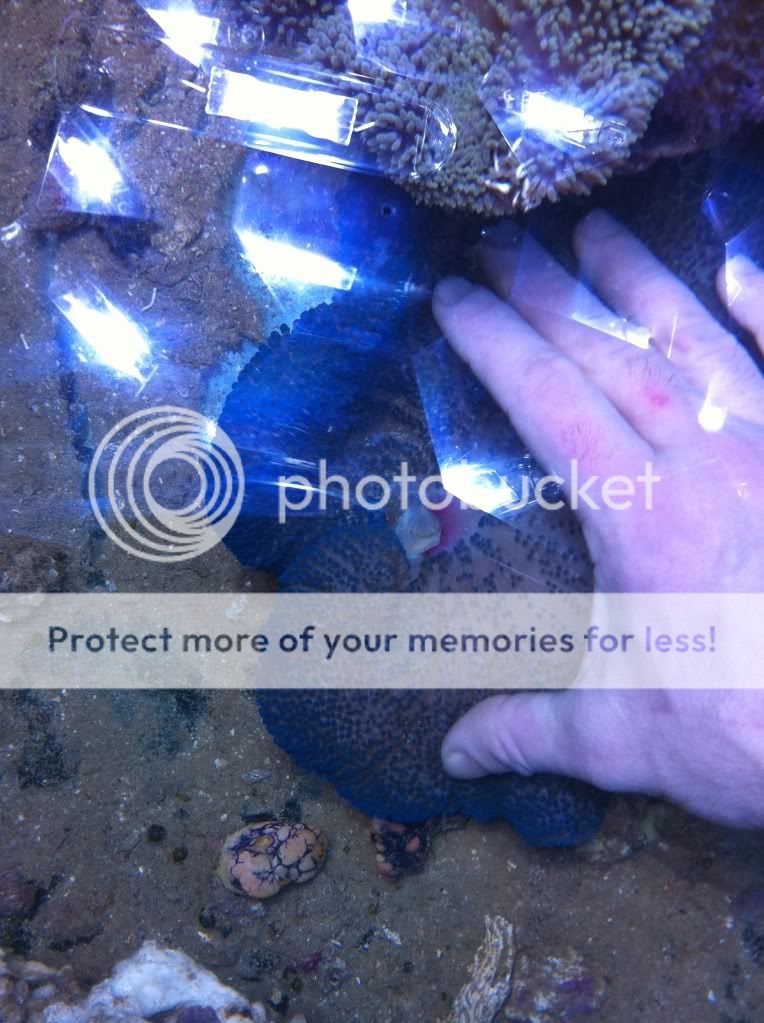Well,
It is time to understand that my gig. is not able to handle the bacteria content in the aquarium water. When completly deflated I remove him to QT with antibiotic and he recovers, but when reintroduced in DT he deflates completly in some days...
I changed from cloramfenicol to enrofloxacing, the gig. recovered the sticky properties in QT, but after, in DT he deflates again....
I thought it was possible to recover the nem with the antibiotic, but as far as I have experienced, it is only temporary.
Good luck to all the anemone fans out there!
I respect what you have done, and am hoping that you will continue your efforts in trying to save this animal. You have a rather unusual gigantea, you made it this far, and I hate to see you loose it. Just wondering, what was the dosage conentration that you were treating?
I tried the clormafenicol @250mg/5gal H2O/5 days and the results were very similar to yours. Then, I tried a loading dose 1g/5gal H2O concentration for the first 12 hr, then @ 500mg/5gal for 14 days and the result thus far seems promising. I used 40gal water volum for 4 anemones and did water chage every 24 hr except the first day.
Why not try it at a higher dose? Do you have access to a lab with negative pressured environment? If you don't, gloved, masked and cover when enter the treatment room should be your routine. May be a temporary out door treatment facility will lower your risks of exposure to the high concentration of the med.
By the ways, I did the study while I was overseas.




